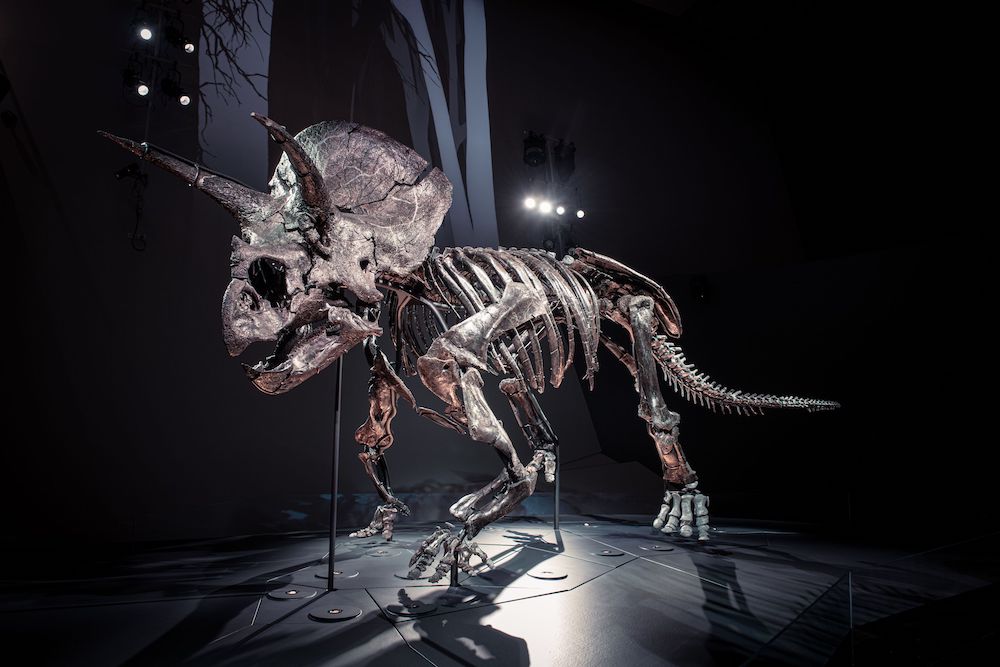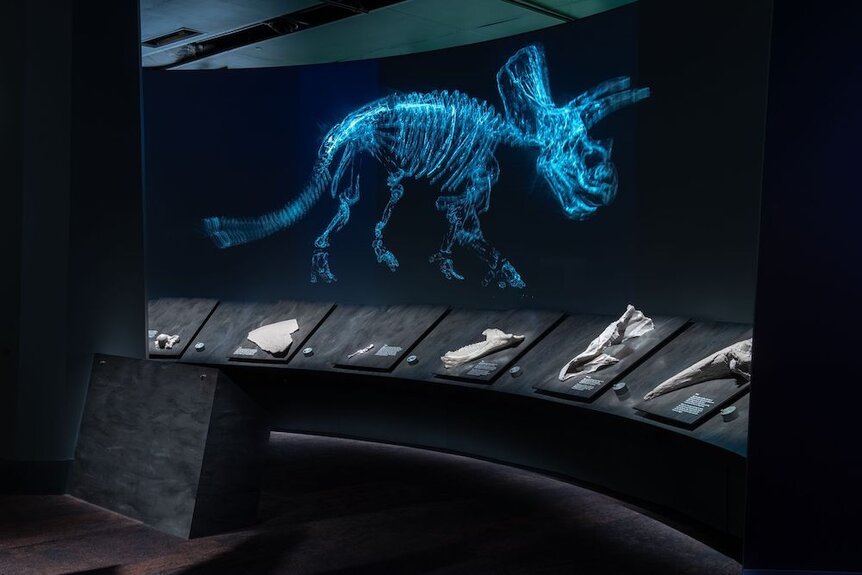Create a free profile to get unlimited access to exclusive videos, sweepstakes, and more!
'Horridus' is the most complete Triceratops skeleton ever, and it has secrets to tell
Think majestic, not horrid.

Horridus is a Triceratops horridus skeleton that is also the most complete Triceratops skeleton ever — and it has found its forever home. What remains of this majestic creature from about 67 million years ago now stands in Australia’s Melbourne Museum, in the exhibit Triceratops: Fate of the Dinosaurs. It speaks through its bones. With just its skeleton weighing in at 2,000 pounds, and a menacing set of horns, the shadow it casts over visitors is hauntingly awe-inspiring.
Unlike the dinosaurs set to roam around in a few months in the Jurassic World sequel Dominion when it opens June 10, even the size and strength of Horridus could not keep it from succumbing to extinction. Dinosaurs are thought to have been on the decline long before Earth was smacked by a behemoth asteroid. While the exhibition is a tribute to its power, it is also a reminder that a decline in biodiversity could send our planet spiraling into a mass extinction even if there is no space rock to trigger it. Paleontologist James Rule, Curatorial Research Assistant of Paleontology at Museums Victoria, has had encounters with the skeleton that were closer than most.
“Horridus the Triceratops’ skeleton is amazing because it was found articulated in the field,” he said. “After it was excavated, we used cutting-edge 3D data to reconstruct the pose of the skeletal mount, digitally articulating the bones of the skeleton.”
This made it possible for Pangaea Designs to create a metal armature that would hold the bones upright. There was still more to Horridus than just its striking presence. Rule — along with paleontologists Hazel Richards, who digitally articulated the skeleton, and Erich Fitzgerald, Senior Curator of Vertebrate Paleontology — found out it was possible to tell that chewing tough plants had worn away many of its teeth, but replacements were in the process of coming in when it died. Some other things about Horridus were not immediately obvious.
Just because Horridus was a herbivore, it wasn’t automatically easy prey. Neither Triceratops horridus nor Triceratops prorsus (the two valid species of Triceratops) was something a hungry carnivore would want to attack from the front, because if one of those horns plunged into its flesh, it could have ended up being the victim itself. There is no physical evidence of this on the horns of Horridus, but that doesn’t make such a situation impossible for either species of Triceratops. Maybe they could charge right into a T. rex. They had armor for a reason. That could also be why the braincase of Horridus was amazingly intact.
“When we CT scanned the skull, we found that the interior of the braincase was remarkably intact,” said Rule. “Using 3D visualization software, we were able to segment out an endocast of the brain. including the cranial nerves that lead from the brain to various parts of the body.”
An entire dinosaur brain was first reconstructed from an endocast, or internal cast, in late 2020, so this is a relatively new frontier. The cranial nerves transmit electrical signals from the brain to other parts of the body. Because the bones of the inner ear were intact, and the inner ear picks up sound signals for the brain, the paleontologists were also able to tell that Horridus was able to hear low-frequency sounds.
Something else unexpected was organic material where the gut of Horridus would have been. While its soft tissues had degraded to leave behind nothing but bone, it is possible that the imposing reptile’s gut contents may have fossilized with it. This is still being investigated because there are other possibilities for how that material got there, but Rule thinks it would be a fantastic find if that really was the last meal of Horridus.
“Fossils are more than just old bones, they are the remains of animals that once fought, ate, and died on planet Earth. They had entire lives that may seem like a long-lost mystery,” he said.
Triceratops horridus did not actually die out because of the devastation caused by the Chicxulub asteroid. The species went extinct before that, though Triceratops prorsus was unfortunately around for the event a million years later. After volcanoes were triggered by the asteroid, volcanic ash hung so thick in the sky that it blocked out sunlight and killed off the plants these herbivores depended on. Triceratops were so large that there would have not been enough food to feed so many of them.
“Triceratops [was] a hungry, hungry, herbivore,” Rule said. “For an animal as large as Triceratops, this would have been a death sentence.”
Jurassic World: Dominion opens June 10.



























